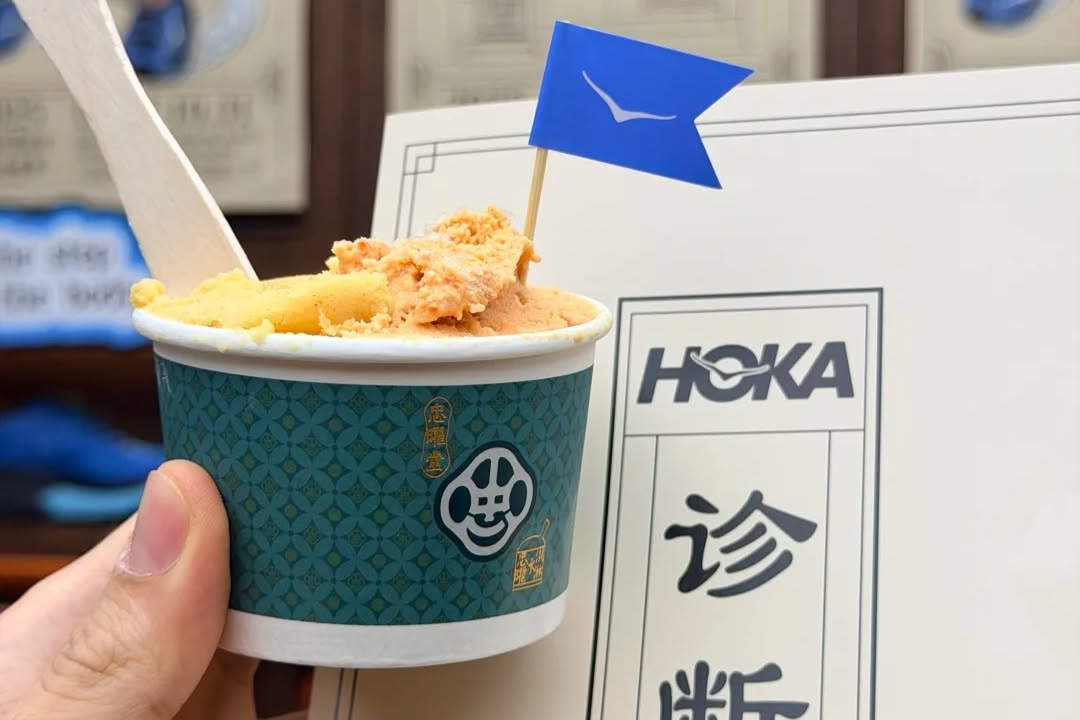For the past few weeks, whenever Chen Xingming, a computer science professor in Pennsylvania, had needed groceries, she’d either order them online or go to the nearby Asian market — where before entering, she’d sit in her car and put on a face mask. With the recent rise in anti-Asian incidents linked to the coronavirus pandemic, she avoided places where a mask might make her stand out.
“Masks are kind of the norm within the Asian community,” Chen says.
“I think [my town] is a safe place, but I don’t want to be attacked. I don’t want to be discriminated against, and I don’t want to be judged.”
Until the US’s Center for Disease Control reversed its position on face masks on Friday, Chen, like many Chinese nationals currently living in the US, had been caught between conflicting health policies that had put her at odds with other members of her community. But now that the CDC has revised their guidelines to recommend “cloth face coverings,” she feels secure wearing her mask out in the open.
Breaking: CDC’s recommendation on use of cloth face coverings, especially in areas of significant community-based transmission of #COVID19. Read more: https://t.co/bihJ3xEM15
— CDC (@CDCgov) April 3, 2020
When cases of Covid-19 first began to spread across China, the country’s central and local governments quickly enforced mask-wearing in all public spaces, viewing it as essential to lowering the transmission rate. In contrast, in the US, the CDC stated that it was unnecessary for healthy individuals to wear masks, as experts argued that they couldn’t prevent the inhalation of virus-spreading airborne particles. Although Dr. Anthony Fauci, director of the National Institute of Allergy and Infectious Diseases, later admitted that the policy partially stemmed from a shortage of PPE equipment, the emphasis has always been on protecting the healthy from the sick.
While medical protocol is generally regarded as unbiased and representative of universal truth, it often cannot be separated from the culture and politics from which it emerged. Ashley Kranjac, professor of sociology at Chapman University, explains that health behaviors are often a product of a culture’s norms and values, and that the public response to health regulations can point toward patterns already in place. “In the United States, for example, the cultural system is built on a foundation of individualism and exceptionalism,” she says, “whereas in [other places] value systems are one of voluntary collective responsibility.”
Related:
 Coronavirus Stirs Rumors and Racism Towards Chinese Eating Habits and HealthOn social media, ignorant rhetoric about food and health is spreading faster than the virus itselfArticle Feb 03, 2020
Coronavirus Stirs Rumors and Racism Towards Chinese Eating Habits and HealthOn social media, ignorant rhetoric about food and health is spreading faster than the virus itselfArticle Feb 03, 2020
For Chen, when everyone wears a mask within the Asian market, no one is singled out as a carrier, and responsibility for ending the outbreak is communally shared. “Sometimes [with the coronavirus] you don’t even realize that you may be affected. That’s why I also prefer to wear masks if possible,” she says. “Because I think maybe I already have it, but don’t know that yet, and I can maybe avoid infecting other people.
“People think that if you are not wearing a mask, that it means that you don’t care, you are irresponsible, and you are putting other community members at risk.”
Whereas Asia has experienced several pandemics within the last 20 years, many Western nations lack this form of collective memory. The last pandemic of this scale on US soil was the 1918 Spanish flu, during which the US led a worldwide mask-wearing effort, and in some places, even made mask-wearing mandatory.
Mass use of face masks as a preventative measure reemerged in Asia during the 2002-2003 SARS pandemic. Tens of thousands in China were quarantined, the government set up temperature checkpoints, and schools and other public places were similarly shut down; officially 5,300 were infected and 249 killed. Chen says:
“The SARS outbreak kind of traumatized the Chinese people. That’s why, in this year’s outbreak, we [are acting] true to what we have experienced in the past. We just don’t want to go through that again and would like to control as much as possible.”
Like many of her peers, Lily Yuan gathered stories during the outbreak’s early stage via Chinese-language social media and news platforms. A college senior majoring in finance and statistics at a US university, she believes that face masks were vital to curbing the outbreak in China. “The virus is transmitted through droplets [and] it can enter your body through either your mouth or your nose,” she explains. “If you wear a mask, it makes sense that it would be a preventative measure for the stuff to not come in.”
But Yuan has also hesitated to wear a face mask in public, and has only done so when a majority of Asians were present. “People just associate Asian faces with the coronavirus,” she says, acknowledging the justifiable fear of abuse many Asians in America currently feel.
A study by Russell Jeung, professor of Asian American Studies at San Francisco State University, found that there were more than 1,000 reported cases of racism and xenophobia against Asian Americans between January 28 and February 24 — the period during which coronavirus cases were first reported in the US. Stop AAPI Hate — a newly-launched website tracking anti-Asian harassment — has reported a continuation of this trend, especially after President Donald Trump and other top government officials insisted on using the phrase “Wuhan virus” rather than the virus’s medical name.
Related:
 A New Site to Report Racist Attacks Against Asian-Americans Received 1,000+ in Two WeeksPlus online hate speech directed at Chinese is up 900%, and there’s a growing list of incidents on Wikipedia from 38 countriesArticle Apr 06, 2020
A New Site to Report Racist Attacks Against Asian-Americans Received 1,000+ in Two WeeksPlus online hate speech directed at Chinese is up 900%, and there’s a growing list of incidents on Wikipedia from 38 countriesArticle Apr 06, 2020
Although Yuan hasn’t experienced violence or discrimination herself, she has an acquaintance at her university who has. “I think it was the day right after the Trump tweet about the whole ‘Chinese virus’ thing,” she says. “She was walking on campus and there was a car passing by, and people from the car shouted at her, ‘fuck Chinese virus.’”
Kranjac says the xenophobic responses to the use of face masks largely derive from centuries of Eurocentric disease framing — rooted in long-standing anti-Asian sentiment — and are driven by the fact that the coronavirus first emerged in China. “Consider the 1900 plague, when Chinese-specific quarantines were enacted,” she says. “In the current Covid-19 pandemic, we see the all-too-familiar attacks on people of Asian descent, in part, driven by descriptions of the disease as ‘the Chinese virus’ and the lack of understanding of why people wear face masks in Asian culture to begin with.”
Related:
 Empires of Disease: Why the Coronavirus is Such an Emotional Issue for China and the WorldThe coronavirus outbreak in Wuhan has morphed into a global panic. China’s past suggests why epidemics are such an emotional issueArticle Feb 10, 2020
Empires of Disease: Why the Coronavirus is Such an Emotional Issue for China and the WorldThe coronavirus outbreak in Wuhan has morphed into a global panic. China’s past suggests why epidemics are such an emotional issueArticle Feb 10, 2020
Like Chen, Yuan is pleased by the new CDC regulation, particularly because she believes it will normalize masks for those like her who already wear them. Yet she can’t help but remain critical of how the situation in the US has been handled. “Changing its recommendation now just made all the pre-stated claims that wearing a mask is unhelpful look like a joke,” she says. “I think in the middle of a pandemic, the last thing the government would want is to issue contradicting guidelines to people.
“If there is ‘no scientific evidence’ to prove benefits of wearing medical masks, how could it be helpful to wear just a cloth?”
While Chen and Yuan are optimistic that mask-wearing will become more widely accepted, Kranjac suggests that the xenophobia surrounding the practice won’t suddenly disappear. The current anti-Asian sentiment, she explains, is woven into a larger “adherence to cultural and social value systems,” as is the long history of discrimination against Chinese and other Asian groups.
Similarly, there shouldn’t be the expectation that everyone in the US will be suddenly wearing a cloth mask. “Individual acceptance of newly-introduced guidelines, such as wearing face masks, depends on norms, values, and one’s trust in science and government experts,” Kranjac notes. “The adherence to health guidelines is [also] known to follow racial/ethnic and socioeconomic lines, and ultimately leads to variation in health behaviors.” Despite announcing the revised mask guidelines before the press on Friday, Trump has said that he himself would not follow them — a move that may be echoed amongst his supporters and other skeptical Americans.
Though S., a tech worker living in Boston, says she now feels safer going out with a mask on, she offers a hint of vindication. “People have started to quarantine [in the US]. But two months ago, a lot of American media was laughing at China, commenting on how China is restricting people to their homes,” she says. “And now the US is taking the same measures.”
As Covid-19 cases in the US continue to climb, many like S. wish the US had stopped laughing at face masks sooner as well.
Header image: Kate Trifo via Unsplash

















